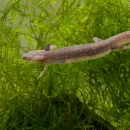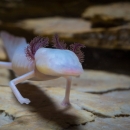
Scientific permit requirements for conducting and reporting on presence/absence surveys and related permitted activities for listed Eurycea salamanders. Please note that this document supersedes any previous guidance from the Service on conducting presence/absence surveys. We ask that you refer to this document before conducting activities authorized for these species by your permit.
Publication date
Type of document
Policy
Facility
Program
Species
FWS Focus
FWS Focus
FWS Focus
FWS Focus
FWS Focus
FWS Focus
FWS Focus
FWS and DOI Region(s)






